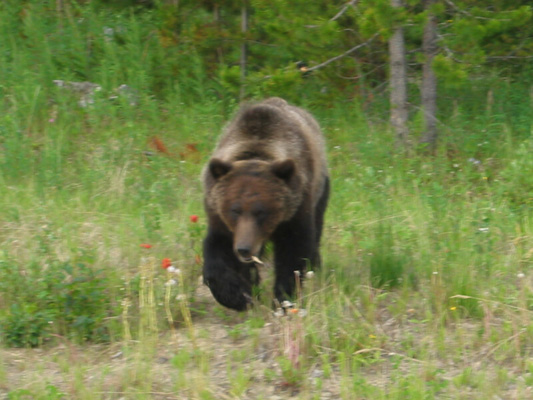
Abstract
Grizzly bears (Ursus arctos) in west-central Alberta occupy an increasingly human-dominated landscape. Natural resource extraction activities are hypothesized to increase stress in animals that reside in such changing landscapes by influencing habitat and resource availability. Our study aimed to determine whether stress, represented by hair cortisol concentration (HCC), was associated with variables related to landscape conditions in a population that increased by 7% annually from 2004 to 2014. Hair samples (n = 157) were collected using barbwire hair snags placed throughout the Yellowhead bear management area in Alberta, Canada. Candidate models were developed a priori representing hypotheses related to biologically and ecologically plausible relationships between HCC and landscape variables. Generalized linear model analysis with landscape attributes representing anthropogenic disturbance, food resource availability, and terrain conditions was used to determine potential drivers of HCC. We found support (ΔAICc ≤ 2.00) for three models that included variables from each hypothesis. Anthropogenic variables had the greatest impact on HCC; increasing oil and gas well-site density resulted in reduced HCC, while increasing distance to coal mines resulted in elevated HCC. Hair cortisol concentration also increased as forest crown closure became more variable, while HCC decreased as the soil wetness (represented by compound topographic index) increased. Some forms of anthropogenic disturbance have been linked to increased food availability for this species. Therefore, we suggest that changes in landscape conditions from 2004 to 2014 may have indirectly increased food abundance and ultimately resulted in a reduction in HCC at a population level during this time period. Measuring HCC provides a non-invasive and important monitoring strategy to assess the impact of environmental change on residing species and should be considered in landscape management decisions.
Citation
Wilson, A. E., Kearney, S., Wismer, D., Macbeth, B., Stenhouse, G., Coops, N. C., & Janz, D. M. (2020). Population‐level monitoring of stress in grizzly bears between 2004 and 2014. Ecosphere, 11(7), e03181. doi:10.1002/ecs2.3181






